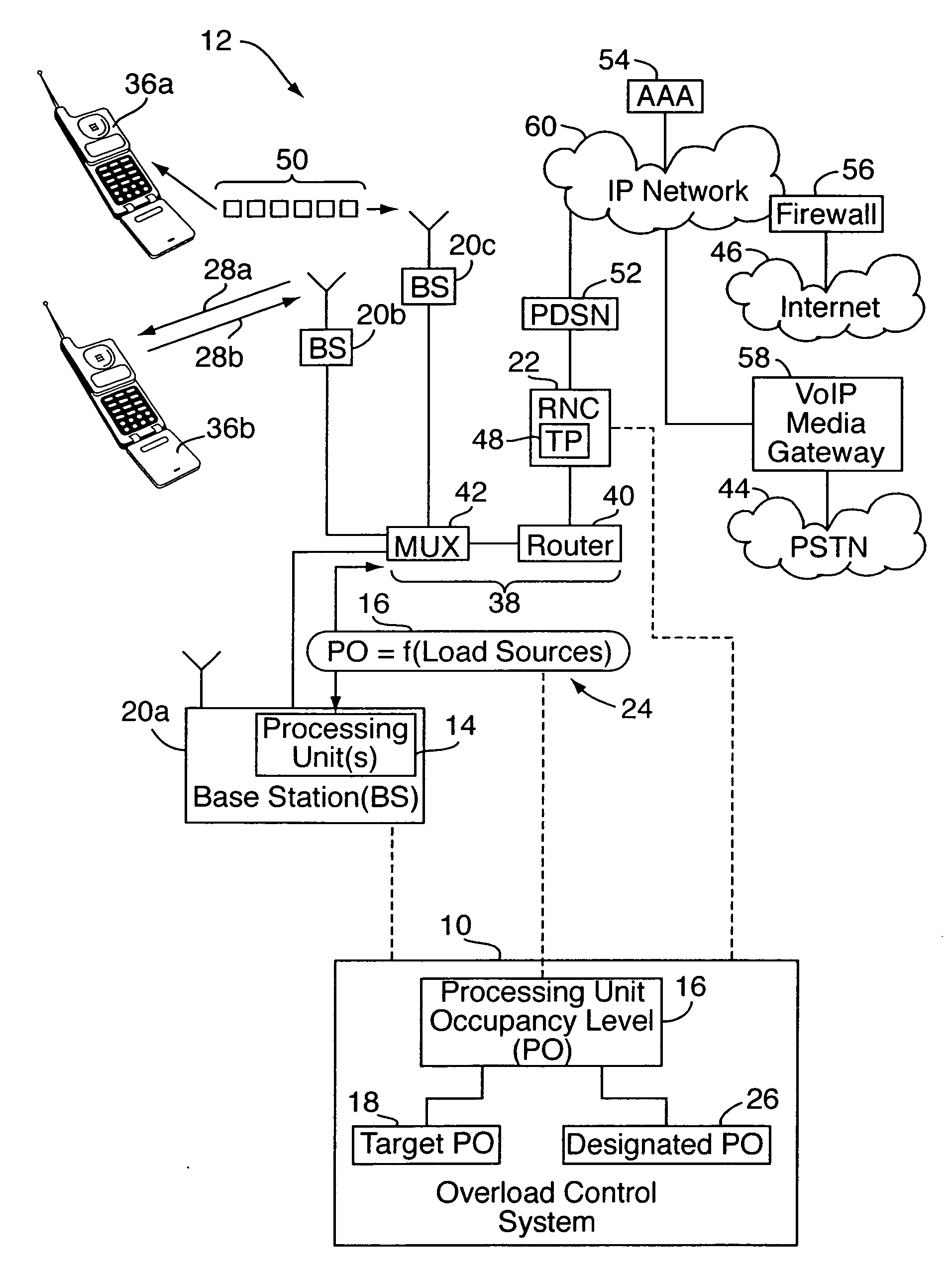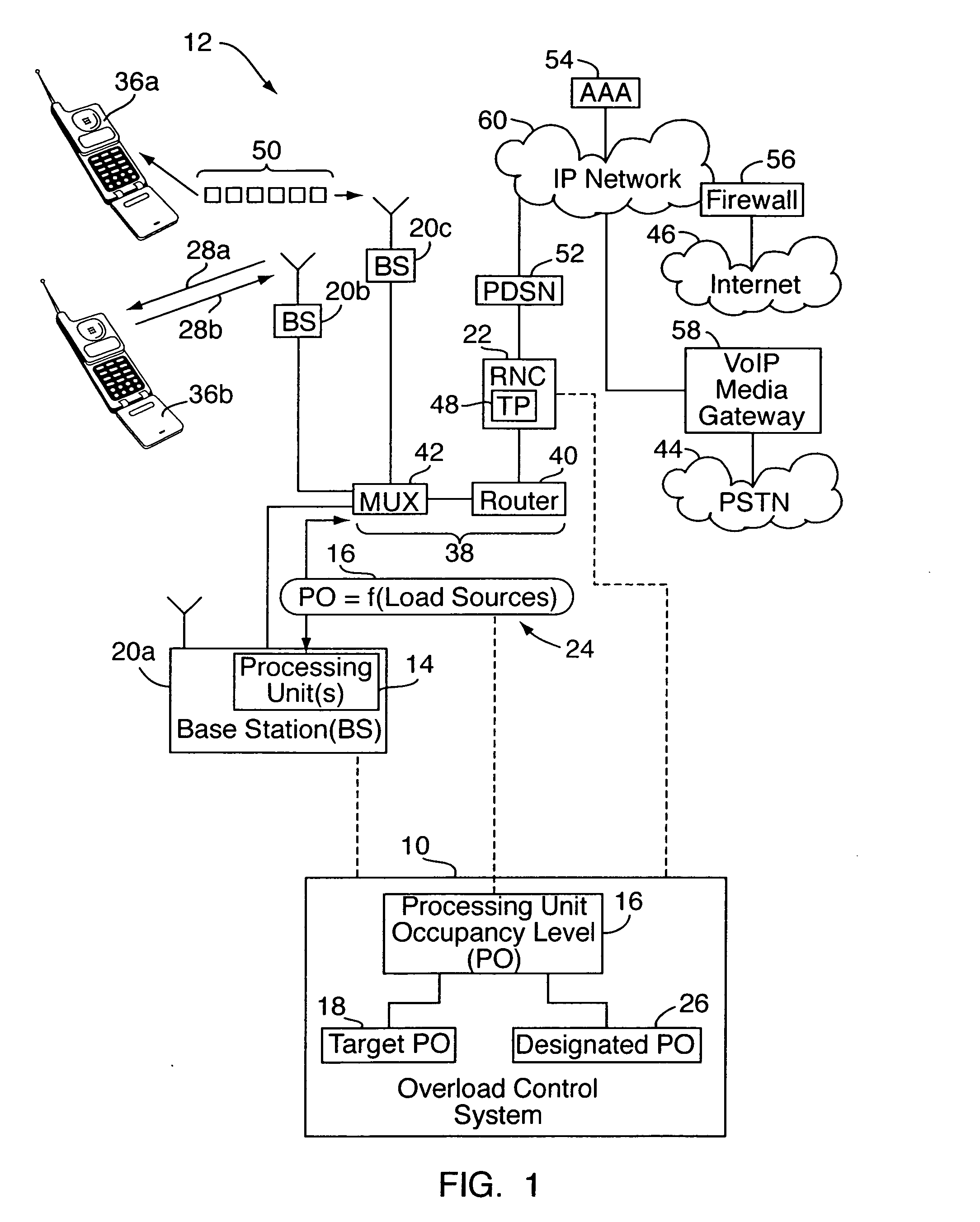Method and system of overload control in packetized communication networks
a technology of packetized communication network and control system, applied in the field of communication, can solve the problems of high user dissatisfaction rate, poor quality calls, and particular challenges of wireless network packet voice traffic, and achieve the effects of reducing processor load, reducing data loss incidents, and reducing data load
- Summary
- Abstract
- Description
- Claims
- Application Information
AI Technical Summary
Benefits of technology
Problems solved by technology
Method used
Image
Examples
Embodiment Construction
[0015]With reference to FIGS. 1-7, an embodiment of the present invention relates to a method and system 10 for processor overload control in a wireless communication network 12. Typically, the system 10 is used to monitor and controllably reduce the amount of data being processed by a network microprocessor or other electronic processing unit 14 during times of heavy network traffic, e.g., if the processing unit becomes overloaded, thereby reducing incidents of data loss, data delay, and the like. On an ongoing basis, the processor occupancy level (“PO” or “PO level”) 16 of the processing unit 14 is monitored (e.g., periodically measured) and compared to a target processor occupancy level 18. The processing unit 14 is part of a base station (“BS”) 20a-20c, a radio network controller (“RNC”) 22, or other network component where data is processed. If the measured PO 16 exceeds the target PO 18, one or more network load sources 24 associated with the processing unit are controlled to ...
PUM
 Login to View More
Login to View More Abstract
Description
Claims
Application Information
 Login to View More
Login to View More - R&D
- Intellectual Property
- Life Sciences
- Materials
- Tech Scout
- Unparalleled Data Quality
- Higher Quality Content
- 60% Fewer Hallucinations
Browse by: Latest US Patents, China's latest patents, Technical Efficacy Thesaurus, Application Domain, Technology Topic, Popular Technical Reports.
© 2025 PatSnap. All rights reserved.Legal|Privacy policy|Modern Slavery Act Transparency Statement|Sitemap|About US| Contact US: help@patsnap.com



